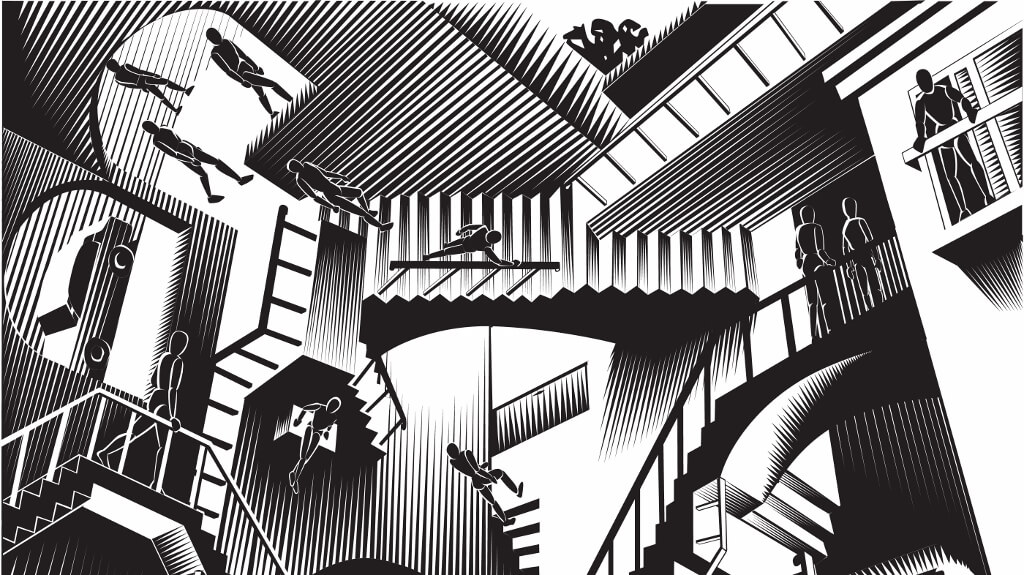Innovation in business markets has caused unprecedented progress, but also created a baffling array of choices for businesses. How can entrepreneurs pick the right strategy for the future?
How Businesses Can Master The Paradox Of Choice
Innovation in business markets has caused unprecedented progress, but also created a baffling array of choices for businesses. How can entrepreneurs pick the right strategy for the future?

Freedom of choice, argues psychologist Barry Schwartz, is ruining our lives. In his now famous Ted Talk, The Paradox of Choice, Schwartz suggests the myriad options now available to western societies have left us more dissatisfied, not happier; paralysed by a fear of taking the ‘wrong’ approach.
It is not a new theory. Back in 1946, in Existentialism Is a Humanism, French philosopher Jean-Paul Sartre expressed the same idea as “man is condemned to be free” – with responsibility for our actions considered as a near-crippling burden.
Now, thanks to developments in the likes of cloud computing and the ‘as-a-Service’ business model – modern IT allows businesses a level of freedom never experienced before and the debate is becoming relevant for many of the most forward-thinking organisations.
IT is enabling weird and wonderful business models and laying the bedrock for ideas which were previously considered unfeasible - the sharing economy and multi-sided markets are now thriving.
But, as Schwartz and Sartre predicted, with this freedom comes a new level of pressure; the so-called ‘next step’ for a business is no longer as clear-cut as it once was.
So how will the business and IT department fare now their path is no longer mapped out?
Brave New World
Crucially, as technology has changed, so too has business culture. The market now favours a proactive approach: more than ever risk equals reward and fear of failure is being replaced by ‘hope’; an optimism for growth, innovation, and transformation.
Businesses are no longer constrained by the ‘art of the possible’; compromise and practicality is out, new thinking and expanding horizons are in.
With hands no longer tied by the traditional and conservative mind-set, businesses have shifted in their use of technology and moved the focus away from draconian control – in which the IT department set strict limits on the apps and services that could be used – and towards freedom and employee empowerment.
Part of the problem is that when it comes to employee freedom there is no longer a clear charter to decide who gets what. While the C-Suite may need the freedom to make its own tech decisions, how far does this extend through the organisation?
Should businesses be offering all users – from internal staff or admin assistants – the option to pick their own applications and devices?
Of course, this mind-set shift is about more than simply choosing what device you answer your emails on. It is about ensuring that your organisation is able to use technology to optimise its chosen business model.
And while it may be done through a ‘marginal gains’ approach – with each user making small steps that ultimately drives business on leaps and bounds – there is a question mark over how much of the change is driven by employees, and how much is driven by IT. Where do we draw the line in tech liberation?
Keep Calm and Innovate
It’s important to understand that while the IT department plays a crucial role in creating new business models, they can’t do it alone. The business must embrace IT, bringing its offering into the core of its thinking.
The so-called digital revolution is a team project and must be run throughout the wider business. IT provides the potential, it is up to senior managers and individual departments to add the creativity that will help the organisation differentiate itself from the competition.
It’s about making decisions that are based entirely on the needs and demands of the business, and its customers, not compromised by the limits of technology – as has been the case traditionally.
It’s a big step for both the wider business and the IT department and requires a new, nimbler and more innovative approach. Taking a lead for Silicon Valley, organisations – no matter what location, industry, or size – should be ready to change, investing in new business models that better reflect the way their customers want to engage with them.
For the CIO and their IT department, it requires a sudden and dramatic switch in gears. While previously it was ITs way or the highway, the focus is shifting and IT must no longer dictate but advise.
This means offering the business a mix ‘n’ match menu approach. Users should be free to pick and choose the services, applications, or devices, they believe will help them work most efficiently.
Of course, any sensible business will ensure that the options will be entirely dependent on the role and responsibility of the user within the organisation. After all, while the C-Suite are likely to require continuous access to key performance data, this may well be somewhat beyond the scope of general employees.
Ultimately, for both parties it is a daunting prospect. As Sartre may term it: the wider business is ‘cursed’ with the responsibility of decision, making its own choices without the benefit of an excuse should it not work out as expected. Meanwhile the IT department faces seceding the user-centric control to which it has grown accustomed.
Future success relies on a joined up approach – forget departments, forget separate objectives, everyone needs to pull in one direction. The organisations who survive in this new era of IT freedom will be those who come together to forge a single path forward.
Thanks for signing up to Minutehack alerts.
Brilliant editorials heading your way soon.
Okay, Thanks!




